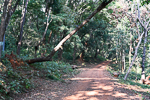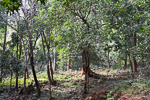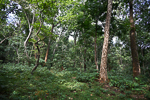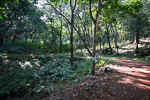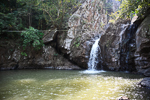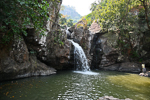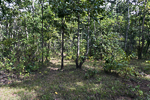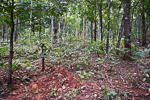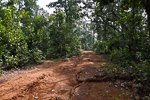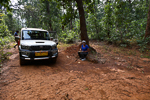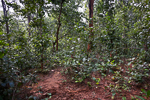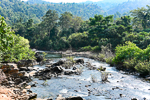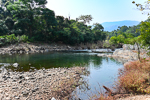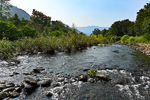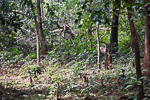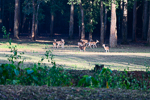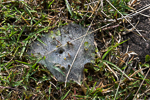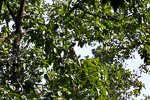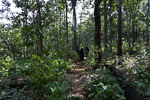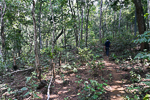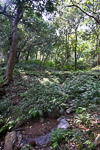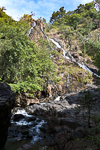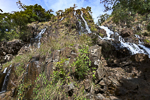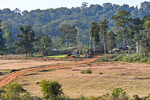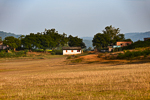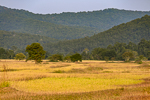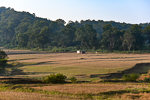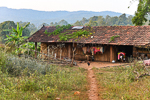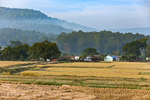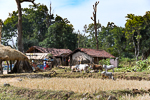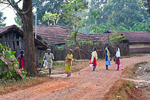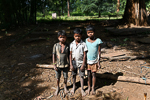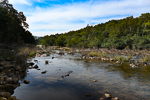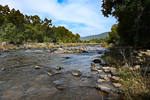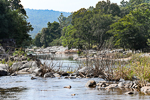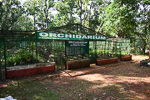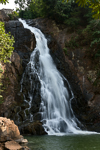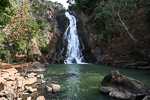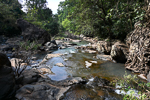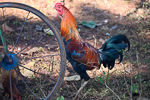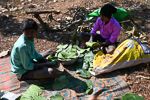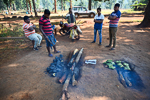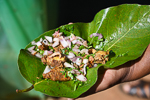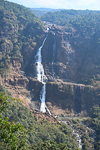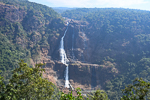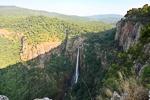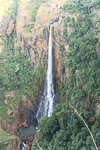Similipal National Park, Odisha, India (Nov 2022)
Similipal national park and tiger reserve, spanning 2,750 sq. km in the Eastern Ghats, includes a large and beautiful forest, the sort that's now exceedingly rare in India. Its prolific springs and hill ranges have turned it into a land of waterfalls and a rich watershed for many rivers, such as Budha Balanga, Baitarani, Salandi, Khairi, etc. Its core area of pristine forest with no human habitation is surrounded by a buffer zone with ~65 small villages of mainly Adivasi (tribal) communities, such as Ho, Santhal, Mankadia, Gond, Kol, Bathudi, Bhuyan, etc. The villagers variously live off agriculture (inside the park) and forest produce (honey, raisin, arrowroots, fishes, blackberries, sal seeds, amla, various greens and tubers, etc.). No pucca roads, power lines, or cell towers inside the park add to the visitor's wilderness experience.
However, gorgeous as the forest is, Odisha has grossly mismanaged its animal population at Similipal. This is often blamed on Maoist guerrillas who—while fighting the Indian State in the 2000s, purportedly on behalf of the Adivasis' struggle for 'Jal Jangal Jameen'—killed and terrorized forest officials into abandoning Similipal. This gave poachers a free rein, allegedly in collusion with the Maoists. They killed off large numbers of tigers, elephants, leopards, boars, deer, etc. Over the years, the State seems to have quelled the local Maoist menace through a combination of sticks (against the guerrillas) and carrots (for the villagers).
Terrible as this episode was, it is only part of a bigger malaise. Commercial interests and expanding agriculture have long destroyed habitats and killed off animals. They continue to do so and create human-animal conflicts at their still-advancing edges. Poaching by outsiders still continues at Similipal, often in cahoots with corrupt park officials, but as Adivasis too have entered the modern economy with concomitant shifts in their values, beliefs, and lifestyles, some have turned poachers themselves. Some Adivasis also continue to practice hunting rituals that are no longer sustainable. Of course, an even larger root cause here is the project of modern "development" itself, which is fundamentally inimical to ecological wellbeing (under both 'socialist' and 'capitalist' regimes, both committed to extractive growth and industrial modernity, and betray no concern for nature or sustainability). Besides land grabs by state and private interests for extractive ends and ever-rising consumption/GDP, it has also disenfranchised indigenous communities and broken down their lifeways and erstwhile relationship with nature. It's a deep and royal mess.
And so seeing large animals in Similipal is now rare, even in the core areas. In three days we saw one civet cat, one mongoose, and a few spotted deer and langurs; our guide had not seen a tiger in years. The dense undergrowth also hides the animals that remain. So while the park still offers a rich wilderness experience studded with streams and waterfalls, it isn't too attractive to wildlife enthusiasts. Will the State get its act together to revive its faunal diversity in Similipal? It is evidently trying, but the odds seem to me against it.
Road inside the park |
A beautiful forest |
Dense undergrowth |
A bend in the road |
Sitakund waterfall (more) |
Sita bathed here! |
Visitors |
Sal dominated forest |
Anthills abound (more) |
4WD territory |
Lunching in the wild |
Park spans 2,750 sq. km |
aka Palpala River |
Visitors |
||
Spot the deer! |
A herd of spotted deer |
A trap on the ground |
Langur high above |
Hike to Asurkhal waterfall |
Forest walk |
Peak wilderness |
A little stream |
Asurkhal waterfall (more) |
Many pathways (more) |
Visitors |
Visitor |
Buffer zone clearings |
Once entirely forest land |
Encroaching agriculture |
|
A village home |
An Adivasi hamlet (1, 2) |
One of the 65 hamlets |
|
Father-son of Ho |
Three village kids |
A beautiful rooster (more) |
Office of a range officer; |
Khairi River vista |
Near Gurguria camp |
A major tributary of the |
Similipal is home to |
Uski waterfall |
Feeding the watershed |
Visitor |
|
Starting raw material: |
Chopped, marinated and |
Finished product! |
|
Barehipani waterfall (info) |
Water fills entire bare |
Joranda waterfall (1, 2) |
Plunges 150 m (more) |
Designed in collaboration with Vitalect, Inc. All rights reserved. |









